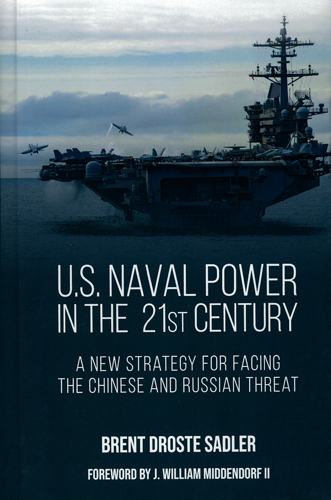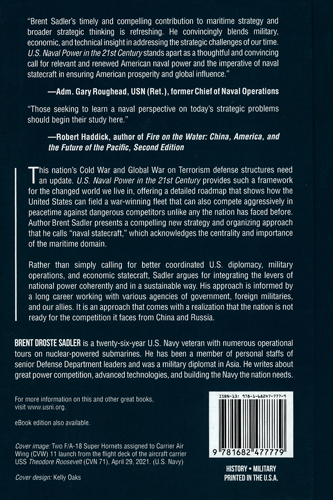U.S. Naval Power in the 21st Century. A New Strategy for Facing the Chinese and Russian Threat/Военно-морская мощь США в 21 веке. Новая стратегия противостояния китайской и российской угрозе
Издание на английском языке
This nation’s Cold War and Global War on Terror defense structures need an update.? U.S. Naval Power in the 21st Century provides such a framework for the changed world we live in, offering a detailed roadmap that shows how the United States can field a war-winning fleet that can also compete aggressively in peacetime against dangerous competitors unlike any the nation has faced before. Brent Sadler presents a compelling new strategy and organizing approach that he calls naval statecraft, which acknowledges the centrality and importance of the maritime domain. While similar in scale and scope to Cold War containment strategies against the Soviets, naval statecraft is much more.?It must be to challenge China’s involvement in global supply chains, which gives that country significant financial heft and influence around the world.? Unlike what existed during of the Cold War, however, Sadler provides a unique vision for competing with China and Russia. Rather than simply calling for better coordinated U.S. diplomacy, military operations, and economic statecraft, Sadler argues for integrating the levers of national power coherently and in a sustainable way.? This is no small feat, and his approach is informed by a long career rich in working with various agencies of government, foreign militaries (including hostile ones), and our allies.? It is an approach imminently appropriate to our times but comes with a realization that the nation is not ready for the competition it faces from China and Russia. The book is a valuable contribution to the national debate over how best to respond to China’s rise and Russia’s antagonisms.
Contents
List of Illustrations
Foreword
Preface
List of Abbreviations
Introduction: Acting beyond the Inflection Point
Chapter 1. Naval Statecraft
Chapter 2. Competition to Rule the Seas
Chapter 3. Global Maritime 2050
Chapter 4. Decisive Theaters
Chapter 5. Posture, Presence, and Platforms
Chapter 6. A New Model Navy
Chapter 7. Fleet Design 2035
Chapter 8. A National Maritime Program
Chapter 9. Developing Leaders for Great Power Competition
Conclusion: Sailing Directions
Notes
Bibliography
Index




